Google, guts and gravity Understand article
Science in School is published by EIROforum, a collaboration between eight European inter-governmental scientific research organisations. This article reviews some of the latest news from the EIROforum members.
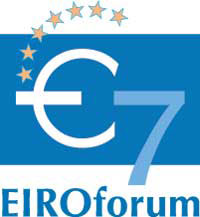
EIROforum
EIROforum combines the resources, facilities and expertise of its member organisations to support European science in reaching its full potential. To learn more, see: www.eiroforum.org
CERN: the 2011 Online Google Science Fair
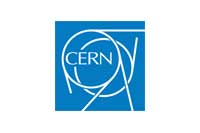
CERN has teamed up with Google, Lego, National Geographic and Scientific American in a global science competition. More than 7500 international entries were received from students aged 13-18, who were competing for great prizes including internships and scholarships.
A public vote based on YouTube videos selected 60 semifinalists, and a jury of teachers and university professors narrowed this down to 15 finalists, whose projects ranged from winged keels to water turbines, from prosthetic limbs to computer programming.
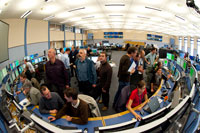
where winner Shree Bose
hopes to visit
Image courtesy of CERN
In the final round the grand prize went to 17-year-old Shree Bose from the USA, who worked on drug resistance in treating ovarian cancer. She will have the unique opportunity to spend three days at CERN, visiting the labs and experiencing science in the making. “I’m so excited to have the opportunity to travel to CERN and actually see the Large Hadron Collider,” says Shree. “If it is running when I visit, I might be allowed to sit in the control room with the physicists – an incredible, once-in-a-lifetime experience.”
For more information and to enter next year’s competition, see: www.google.com/events/sciencefair and the CERN Bulletin (see http://cdsweb.cern.ch/journal) or use the direct link: http://tinyurl.com/cerngoogle
Based in Geneva, Switzerland, CERN is the world’s largest particle physics laboratory. To learn more, see: www.cern.ch
EFDA-JET: just another brick in the wall?
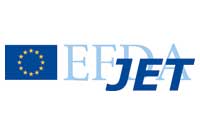
Following the replacement of its carbon tiles with 4500 new beryllium and tungsten tiles, the Joint European Torus (JET) is gearing up for a crucial new set of experiments, to start in Autumn 2011.
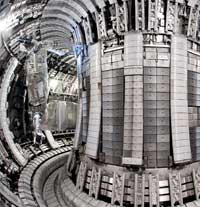
with the new beryllium and
tungsten tiles
Image courtesy of EFDA-JET
The interior tiles play a crucial role in any fusion experiment – acting as the first point of contact with the immensely hot fusion plasma (100-200 million °C). As well as withstanding the heat, they have to be resistant to the retention of tritium (a radioactive gas used as a fusion fuel) and to damage from the fast neutrons created in the fusion reaction. As part of the two-year renovation, JET’s plasma heating power was increased by almost 50% – enabling scientists to study hotter plasmas that are closer to those likely to be produced by future fusion reactors.
The results from the ‘new’ JET will help to determine the interior configuration of ITER, the international successor to JET, and of the first fusion power plants.
Situated in Culham, UK, JET is Europe’s fusion device. Scientific exploitation of JET is undertaken through the European Fusion Development Agreement (EFDA). To learn more, see: www.jet.efda.org.
EMBL: gut reactions
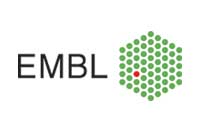
One day, your doctor might ask you not just about your allergies and blood group, but also about your gut type.
This is one of the implications of a new study carried out by Peer Bork’s group at the European Molecular Biology Laboratory, and collaborators from the international MetaHIT consortium (Metagenomics of the Human Intestinal Tract). In an analysis of data from more than 100 people from three continents, the scientists found that, depending on the combination of bacteria in their gut, each person could be said to have one of three gut ecosystems, or enterotypes.

three human gut types
Image courtesy of EMBL /
Petra Riedinger
Although these gut types as such are not related to traits like a person’s age, gender, weight or nationality, certain bacterial genetic markers are: for example, bacteria in older people’s guts tend to produce more starch-degrading enzymes. Such markers could one day help diagnose medical conditions, and treatments could be adapted to a patient’s gut type, as different gut types may react differently to medication and diet.
For more information, see the press release (at www.embl.de or via the direct link http://tinyurl.com/guttypes) and the research paper:
Arumugam M et al. (2011) Enterotypes of the human gut microbiome. Nature 473: 174-180. doi: 10.1038/nature09944
Download the article free of charge here, or subscribe to Nature today: www.nature.com/subscribe
EMBL is Europe’s leading laboratory for basic research in molecular biology, with its headquarters in Heidelberg, Germany. To learn more, see: www.embl.org
ESA and CERN: in search of dark matter and antimatter
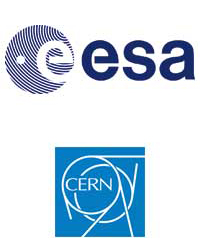
On 16 May 2011, the Alpha Magnetic Spectrometer (AMS) was launched on board the DAMA mission. Accompanied by astronaut Roberto Vittori from the European Space Agency (ESA), and his five crewmates, AMS is the result of a large international collaboration involving both ESA and CERN. AMS, mounted on the outside of the International Space Station, is a particle detector that uses a giant 1.2 tonne magnet – generating a field 4000 times stronger than that of Earth – to analyse the composition of high-energy primary cosmic rays with unprecedented accuracy.
AMS will use the unique environment of space to study the Universe and its origins by searching for antimatter and dark matter particles, looking for answers to questions such as ‘Does nature have a preference for matter over antimatter?’ and ‘What makes up the invisible 90% of the mass of the Universe?’.
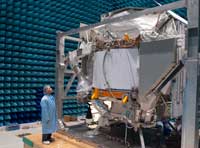
Centre’s Maxwell
electromagnetic radiation
chamber for electromagnetic
compatibility and
interference testing
Image courtesy of ESA
For more information, see the AMS website (www.ams02.org) and the CERN press release (see http://press.web.cern.ch or use the direct link: http://tinyurl.com/amscern).
To learn more about the DAMA mission and ESA’s involvement in the AMS project, see: www.esa.int/SPECIALS/DAMA_mission
ESA is Europe’s gateway to space, with its headquarters in Paris, France. For more information, see: www.esa.int
ESO: press releases for the young
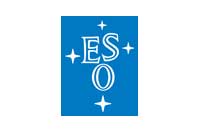
Life has just become easier for parents and educators of children curious about astronomy. The European Southern Observatory (ESO) has teamed up with the education project Universe Awareness (UNAWE) to produce Space Scoop, aimed at children aged 7-11. This service feeds children’s curiosity about the Universe, offering simply written versions of ESO’s science and photo releases.

In the classroom, teachers can share and discuss the latest discoveries with their pupils or direct them to reputable and easily understandable online sources of information.
Space Scoop is made available online at the same time as the original version of a release, so children can learn about the latest developments in astronomy as they happen. To subscribe to Space Scoop, send an email to news@unawe.org
For the first Space Scoop release, see: www.eso.org/public/news/eso1113/kids
ESO is the world’s most productive astronomical observatory, with its headquarters in Garching near Munich, Germany, and its telescopes in Chile. For more information, see: www.eso.org
ESRF: a new human ancestor
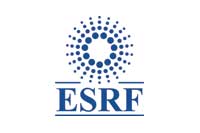
The skull and bones of Australopithecus sediba, a 1.9 million-year-old hominid species discovered in South Africa in 2010, have recently been investigated at the European Synchroton Radiation Facility (ESRF).
The first specimen of this species, Karabo (named in a nationwide contest for children), is the skeleton of a young boy, discovered by nine-year-old Matthew Berger, son of American paleoanthropologist Lee Berger.
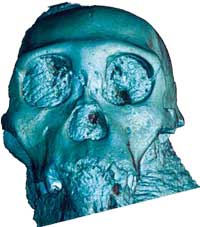
based on 3D scans of the
skull of the A. sediba child
Image courtesy of I Montero,
ESRF
Karabo and an adult skeleton of the same species, discovered nearby, are extraordinarily well preserved. This encouraged Professor Berger to team up with Paul Tafforeau, an ESRF scientist who pioneered the investigation of fossils with a non-destructive method known as X-ray synchrotron microtomography, which has revolutionised palaeoanthropology in the past decade. Their preliminary results on A. sediba have identified what may be remains of the brain, as well as fossilised eggs of insects that could have fed on the flesh of the hominid after death.
For more information and a 3D reconstruction of the skull, see www.esrf.eu/news or use the direct link: http://tinyurl.com/5vodjyk
Paul Tafforeau has already used his method to study the origins of orang-utans. See:
Tafforeau P (2007) Synchrotron light illuminates the orang-utan’s obscure origins. Science in School 5: 24-27. www.scienceinschool.org/2007/issue5/orangutan
Situated in Grenoble, France, ESRF operates the most powerful synchrotron radiation source in Europe. To learn more, see: www.esrf.eu
European XFEL: more than meets the eye

European XFEL, scheduled to open in 2015 near Hamburg, Germany, will be an outstanding facility to generate ultrashort X-ray flashes. Constructing its eight underground shafts and its buildings, both above and below ground, will take time but progress is visible.
Deep underground, 22 500 m3 of concrete have been used to complete the shell of the seven-storey injector complex, with the walls and floors more than a metre thick.
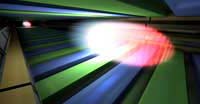
short and intense X-ray laser
flashes, bunches of high-
energy electrons are directed
through special
arrangements of magnets
(undulators)
Image courtesy of European
XFEL / Marc Hermann,
tricklabor
Nearby, the enormous tunnel-boring machines move steadily forward. You can follow them online (www.xfel.eu/project/construction_progress).
Above ground, the first pieces of intricate machinery are arriving in Hamburg for their test runs: the first undulator segment of the X-ray laser’s beamlines, constructed in China; the first module for the superconducting linear accelerator, assembled in France; and the first of three cryogenic test benches, manufactured in Russia.
For more information, visit the European XFEL website (www.xfel.eu) or sign up for its newsletter: www.xfel.eu/news/newsletter
ILL: analysing gravity at the atomic scale
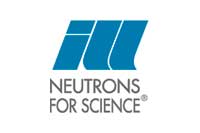
How does gravity work at the (sub)atomic scale? Do Newton’s laws apply, as they do for stars and planets, or do different laws apply at this scale? This important question is being addressed with gravity resonance spectroscopy, a technique developed by scientists from the Institut Laue-Langevin (ILL) and from the Vienna University of Technology, Austria.
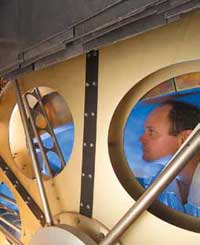
powerful source of ultra-cold
and very cold neutrons
Image courtesy of ILL /
Artechnique
The new technique involves bouncing ultra-cold neutrons on a mirror vibrating at a precisely defined frequency. When this frequency corresponds to the energy difference between two quantum states, the neutrons are excited to the next higher energy state.
The technique provides measurements of unrivalled precision, which can be used to test whether gravity accelerates all objects equally, regardless of their mass, even at the atomic level. This is what would be expected from the equivalence principle, proposed in the 16th century.
Some physicists also believe that the experiments will reveal a slight divergence from quantum energies calculated using Newton’s laws of gravity. This could provide evidence of dark matter particles known as axions, or of the extra dimensions suggested by string theory.
To learn more, see the press release (at www.ill.eu or via the direct link http://tinyurl.com/illgravity) and the research paper:
Jenke T et al. (2011) Realization of a gravity-resonance-spectroscopy technique. Nature Physics 7: 468-472. doi: 10.1038/nphys1970
ILL is an international research centre at the leading edge of neutron science and technology, based in Grenoble, France. To learn more, see: www.ill.eu






